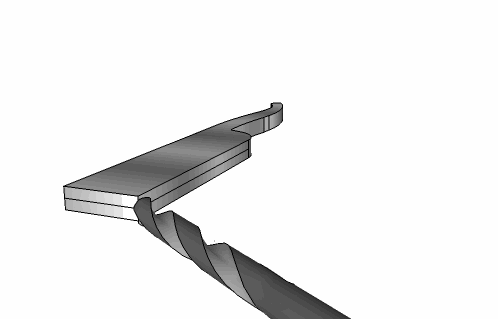Hollow Grinding
Before beginning any work in the shop, be sure that you have taken all safety precautions and have the necessary protective equipment. This includes, but is not limited to: Eye protection, proper attire, and a respirator.
This guide is intended to give an introduction to hollow grinding a razor blank. For this example, we will assume that we are starting with a blank that has already been profiled as shown in the graphics. Also, You should start with a blank that has been annealed prior to grinding.
Contents
Marking the center
The first step is marking the center of the blank. There are many ways to do this with various layout fluids, marking media, gauges and tricks, but the mark must be accurate. The center line will be your guide for everything, and should be scribed around the entire blank (this will help with shaping your tang).
One way to make a good center mark is to find a drill bit with the same diameter as the thickness of your stock. Once you have the correct bit, lay the bit and the blank on a level surface and roll the point of the bit along your blank. The point of the bit will be exactly in the center of the stock. Below is an animation that may be helpfull for illustration.
Making the initial grind
After the blank has been marked, the initial grind can be made. At this point, your grinder should be equipped with a fresh coarse belt (40 grit or so) in order to remove stock quickly.
The blank should be held firmly (but don't get carried away) with the edge pointing up toward the path of the grinding belt. In other words, if the belt is rotating down toward the floor, the edge should be pointed in the opposite direction.
You may start your grind from heel to toe, or from the middle and work out, but you will need to make sure that you grind the entire edge evenly. At first this may be difficult, but you'll be able to see where you may need to change your grinding form by constantly checking your progress on the blank under a good light. Below is a graphic demonstrating the basic approach.
Here is how the blank is presented to the contact wheel 
here is an example of the grinding motion 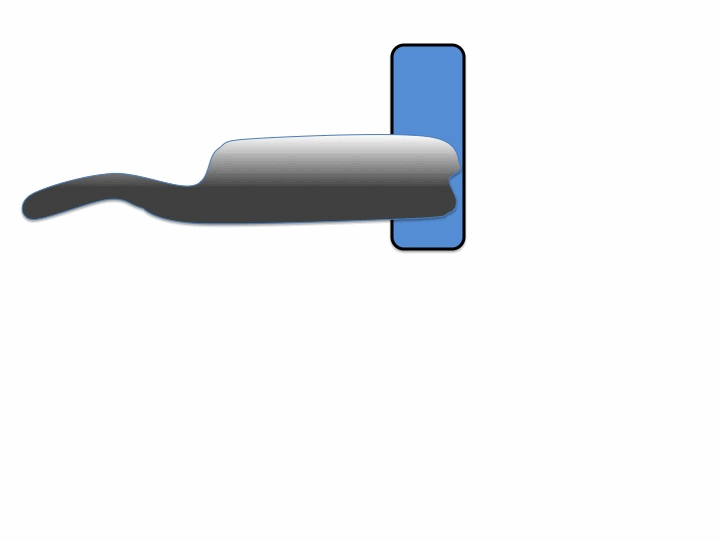
Be careful to keep the blade in the same relative position on the wheel throughout your lateral passes. If you allow the blank to move irregularly upward or downward as you move from side to side your grind will be uneven. *If you are using wheels of differing diameters throughout your process, up and down motion may be helpful for blending the grinding marks for each wheel*
Once you have made an even hollow groove across the entire edge, you can start moving the grind up the spine.
Moving the grind up the spine
Once the initial hollow groove from the first cut is established, continue to grind by following the groove from your initial cut, and work the blank upward on the wheel as you continue to grind back and forth (really just hint the razor upward with a bit of pressure on the spine area if that makes sense). 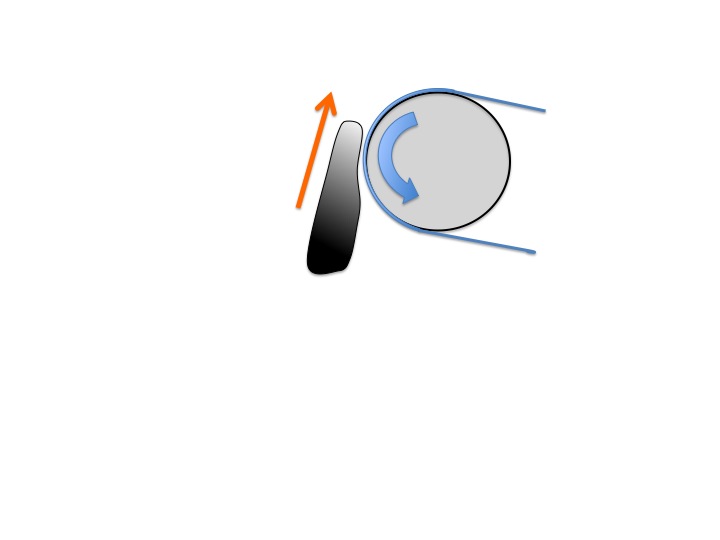
Again, follow the groove, working the razor up the wheel with a hint of pressure on the spine in order to hollow out the blade as high up as needed. After completing this with the course belt, refine the grind with progressively higher grit belts until you reach the desired finish prior to heat treating. Once you have finished this, you have completed one side of your rough grind.
Repeat on the other side
At this point, you will flip the blank and repeat the process until both sides are roughly hollowed out. 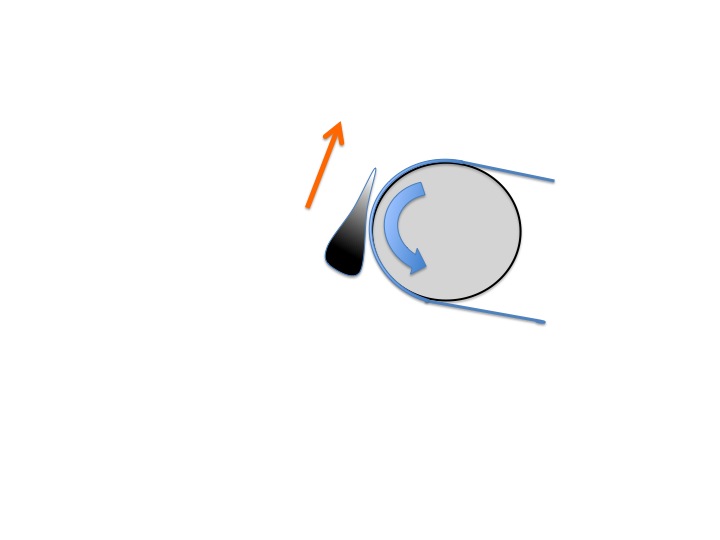
Be sure to leave the edge thick so that your blank doesn't warp from the stresses of heat treating. Somewhere between 1/16" and 1/8" seems to be a good thickness to stop at.
considerations
Be sure to check your progress frequently under good lighting, this will help you identify and correct your mistakes. Some have the tendency to favor one area of the blade as shown here (favoring the middle area) 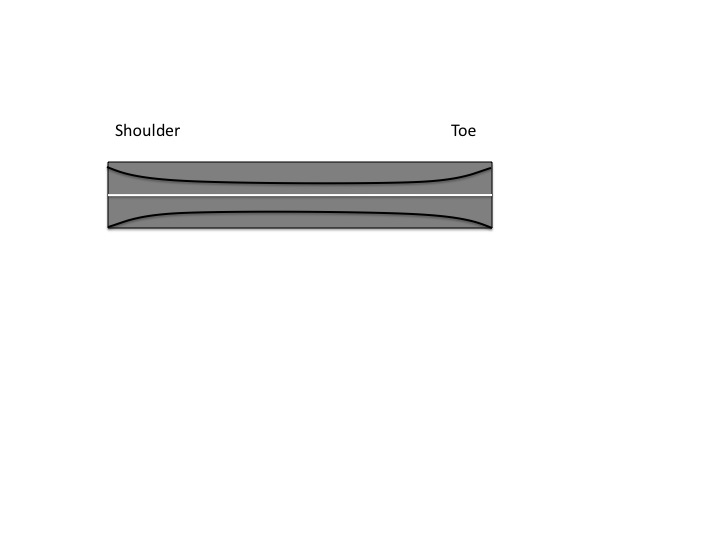
Below is an example of how the grinding motion may be for a smiling blade blank 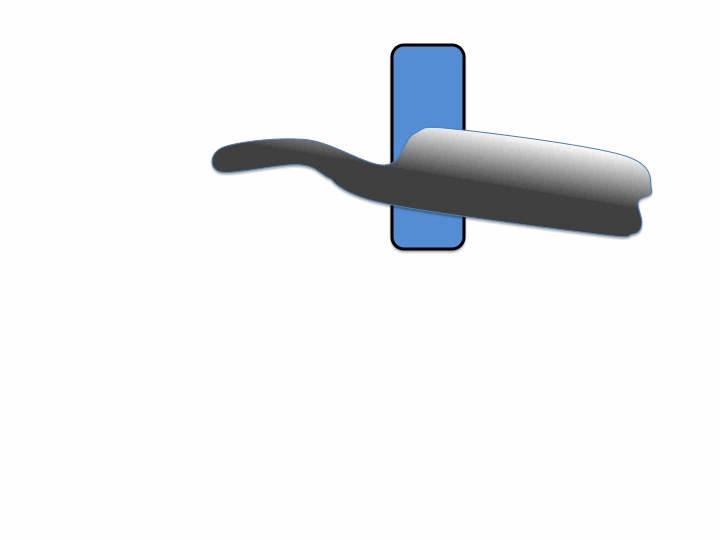
contributions
thanks to all who contributed to this, especially on this thread at SRP http://www.straightrazorplace.com/forums/forge/50486-grinding-thoughts.html
Please continue to add any information as appropriate, Thanks again.
